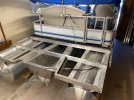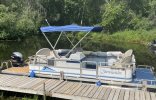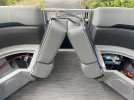DVW
Well-Known Member
- Messages
- 320
- Reaction score
- 585
Sorry if it sounded like I was questioning your capability. I am not. I would be surprised if Bennington left enough room in front of the transom to move the center tube back two feet.Good idea if you can do it. I would be surprised if you can.



